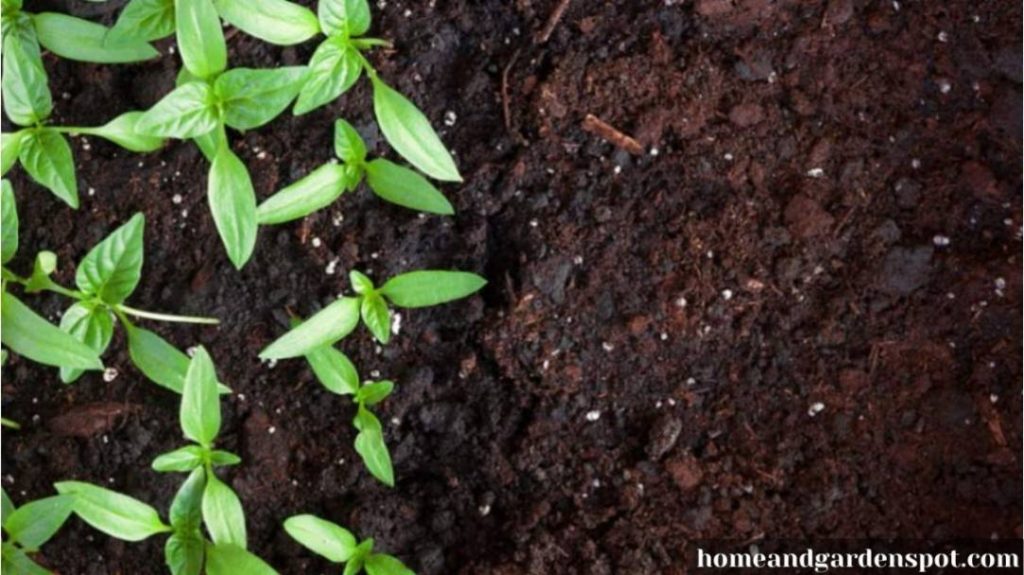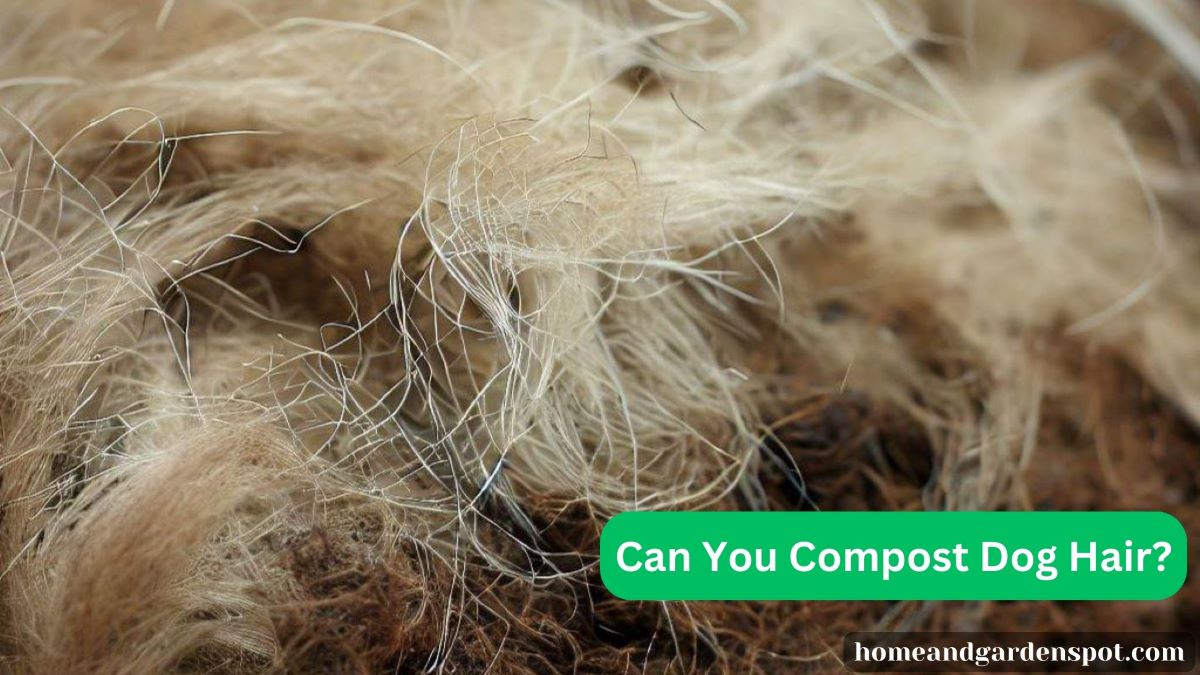As pet owners, we are familiar with the constant battle against shedding. However, recent discussions have explored the feasibility of turning this furry nuisance into a sustainable resource. At its core, composting is nature’s elegant way of recycling organic materials like dog hair. Now, can you compost dog hair?
Yes, dog hair can be composted because the hair is a natural source of nitrogen suitable for plants. However, while the hair will eventually decompose, breaking down completely might take some time. This is due to the nature of dog hair, made up of keratin, a tough and resilient protein. Also, only dog hair without chemicals will be useful for composting. Read on to learn more.
Are Dog Hair Good For Composting In Gardening?
Dog hair is good for composting in gardening because it adds a beneficial addition to your composting. In fact, both dog and cat hair can play a pivotal role in enriching your compost pile, offering a generous dose of nitrogen – a vital nutrient for thriving plants.
Dog hair falls under the ‘green’ category when categorizing composting materials. This distinction is due to its high nitrogen content, setting it apart from ‘brown’ materials like twigs and leaves that contribute carbon to the compost mix. Nitrogen is a fundamental building block for plant growth, making dog hair a valuable natural resource to fuel your garden’s vitality.
How Do You Decompose Dog Hair?
Below are the five proven methods for decomposing dog hair:
1. Adding to the Compost Bin for Municipal Pickup
- Collect shed dog hair and ensure it’s free from chemicals or treatments.
- Open your designated compost bin.
- Sprinkle a thin layer of dog hair over the existing compost materials.
- Repeat this process gradually with small amounts of hair to avoid overwhelming the bin.
- Mix the hair into the compost to prevent clumping.
- Close the bin and let the municipal compost pickup service take care of the rest.
2. Hot Composting
- Set up a compost pile outdoors, around four feet wide and four feet high.
- Gather green materials (nitrogen-rich) like kitchen scraps and brown materials (carbon-rich) like leaves or paper.
- Layer the dog hair within the pile as one of the green materials.
- Turn the pile regularly (about once a week) using a pitchfork or shovel to encourage decomposition.
- Monitor the temperature, aiming for a hot composting environment.
- In 3-4 weeks, the dog hair will break down along with the other materials.
3. Cold Composting
- Select a compost bin or designated area in your yard.
- Begin by adding a layer of brown materials like leaves or straw.
- Place a layer of green materials on top, including small amounts of dog hair.
- Continue alternating layers, adding more dog hair over time.
- Avoid turning the pile to maintain a cold composting environment.
- Be patient; the decomposition process will take 6 months to 1 year.
4. Tumbler Composting
- Acquire a tumbler composting bin that suits your needs.
- Fill the tumbler with a balanced mix of green and brown materials.
- Add small quantities of dog hair to the mix.
- Secure the tumbler’s lid and start turning it every few days.
- Monitor the compost’s moisture level and adjust as needed.
- Expect decomposition to occur within a few weeks to a couple of months.
5. Direct Burying
- Choose a suitable spot in your yard for burying waste.
- Dig a hole deep enough to prevent animals from digging up the contents.
- Place dog hair and other organic waste like vegetable scraps, coffee grounds, and crushed eggshells.
- Cover the waste with soil.
- Over time, microorganisms and worms will break down the materials, including the dog’s hair.
Benefits of Composting Dog Hair
Dog hair holds untapped potential as a valuable addition to your composting endeavors, which are the following:
1. Nutrient-Rich Nitrogen Boost
Dog hair is a rich source of nitrogen, a critical nutrient for plant growth. This infusion of nitrogen plays a dual role in your compost pile. Firstly, it contributes to heating the compost, creating an environment conducive to decomposition. Secondly, it fosters the growth of beneficial microbes, accelerating the breakdown of other compost materials.
2. It Has Essential Nutrients For Plant Growth
Dog hair boasts elements such as oxygen, hydrogen, sulfur, and trace amounts of carbon – the components found in bone meal. This similarity makes dog hair an intriguing alternative to traditional bone meal. Composting dog hair indirectly provides your garden with these essential elements, contributing to your plants’ health and vitality.
3. Pest-Repellant
Unlike some composting materials that attract unwanted pests, dog hair possesses a unique trait – its natural scent tends to repel pests. Most pests have a keen aversion to the canine aroma, making composting dog hair an effective way to keep these intruders at bay. This added layer of defense safeguards your compost pile and the plants it nourishes.
4. It Enhanced Earthworm Activity on Soil
Composting dog hair extends its benefits below the surface as well. Earthworms, crucial players in soil health, relish the protein content found in dog hair. As you incorporate dog hair into your compost, you provide an enticing feast for these industrious creatures. The result? Enhanced earthworm activity improves soil aeration, drainage, and overall fertility.

How to Recognize Well-Composted Dog Hair
For dog hair to be used in gardening, it must be well-composted. Well-composted dog hair is dark, crumbly, and earthy in texture. It should no longer resemble the original hair but have broken down into a homogenous mixture with other compost materials. Composted dog hair is rich in nutrients, providing the vital elements your plants need for healthy growth.
Read also: Can You Compost Corn Cobs?
How to Use Compost Dog Hair for Gardening
Once your dog hair has transformed into nutrient-rich compost, understanding how to apply it effectively becomes essential.
1. Use As Mixtures With Soil
Mixing composted dog hair into your garden soil improves its structure by enhancing water retention, drainage, and aeration. The added nutrients from the compost contribute to soil fertility, creating an ideal environment for robust plant growth. This enrichment benefits your plants and fosters a healthier ecosystem beneath the surface.
2. Use As Mulching Around Plants
Using compost as mulch around plants offers a range of advantages. It helps regulate soil temperature, conserves moisture, suppresses weed growth, and gradually releases nutrients into the soil. When applied as a mulch, composted dog hair provides an extra layer of protection for your plants while enriching the soil beneath.
Tips for Applying Dog Hair Compost
1. Avoid Overloading Your Soil With Larger Amount
While composted dog hair is a valuable nutrient source, avoiding overloading your soil with excessive amounts is important. Too much compost can lead to an imbalance in nutrients and disrupt the delicate nutrient interactions that plants rely on. Aim for a balanced approach by mixing composted dog hair with other types of compost and organic matter.
2. Avoid Using in Sensitive Areas
In areas with sensitive plants or where you’re growing edibles, exercise caution with applying composted dog hair. Due to its nutrient density, using too much in such areas might lead to excessive nutrient levels that could harm plants or affect the taste of edible crops. Always follow recommended guidelines and tailor your application based on the plants’ specific needs.
Is Dog Waste Good for Composting?
Yes, dog waste can be composted, and it’s a great way to recycle and reuse pet waste. When dog waste is composted, it becomes a nutrient-rich soil amendment that can be used to fertilize your garden or lawn. Composting dog waste also helps reduce the amount of waste in landfills, which can release harmful greenhouse gases like methane.
To compost dog waste, you should first collect it in a container and mix it with other organic materials such as leaves, grass clippings, and food scraps. You should also keep the pile moist and turn it regularly to speed up decomposition. Also, you should avoid adding meat or dairy products to your compost pile as they can attract pests and slow decomposition.
Lastly, you should not use compost made from dog waste in vegetable gardens as it may contain pathogens that could harm humans. Instead, use the compost on non-edible plants or trees.
How Long Does Dog Poop Take to Decompose In A Compost?
The time it takes for dog poop to decompose in compost depends on several factors, including the size of the pile, the temperature, and the moisture content. It can take 6-9 weeks for dog poop to fully decompose in a compost pile in warm weather and take about 52 weeks in cold weather. However, if you want to speed up the process, add other organic materials, such as leaves, grass clippings, and food scraps, to the pile. These materials will help create a more balanced carbon-to-nitrogen ratio and provide the necessary moisture for decomposition.
Conclusion
You can compost dog hair, and it has a lot of advantages, which include: its nitrogen accelerates composting and nourishes plants; its composition parallels bone meal, enriching gardens; its scent repels pests, protecting compost piles; and it supports earthworms, enhancing soil vitality. These benefits showcase the harmony between ecology and responsible practices, fostering a greener world.
